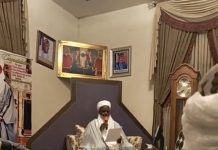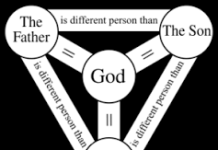QURAN, THE UNREVISED SCRIPTURE.

There are different ways to prove that the Qur’an is the word of God, which has always been true and has never been subjected to change or distortion. These proofs can be classified into three types: the way the Qur’an was transmitted throughout the centuries, some challenging verses within the Qur’an itself, and the periodic, modern-day discoveries in the universe that were first mentioned in the Qur’an more than fourteen centuries ago.
Unlike the Bible and Old Testament that have been subject to innumerable translations, doubtful and spurious transmissions, and corruptions at the hands of clerics up till now (with the “gender sensitive” versions coming out these days), the Qur’an was transmitted to us in an unprecedented and unique manner according to rigorous rules of transmission. The Qur’an was revealed to the Prophet Muhammad (peace be upon him) via the angel Gabriel, and the Prophet subsequently memorized the whole scripture.
Thousands of the Companions of the Prophet learned the Qur’an directly from the Prophet (pbuh). They memorized it and were known in Islamic history as huffaadh (the memorizers and preservers of the Qur’an). Moreover, a number of Companions wrote it down during the lifetime of the Prophet (peace be upon him), and it was compiled in its entirety immediately after his death.
The following generation of Muslims learned the Qur’an directly from the Companions. Thus the chain of teaching and learning through direct contact continued systematically, methodically, and meticulously until the present age.
Additionally, several of the Companions of the Prophet Muhammad (peace be upon him) were appointed as scribes to record the words of the revelation directly from the Prophet himself on parchment, leather, or whatever else was available. The most famous of these scribes was Zayd ibn Thabit, who also memorized the entire Qur’an, and he formed with the others a community of huffaadh that can be compared to academic societies of our present time.
We know the Qur’an was recorded in totality during the lifetime of the Prophet (pbuh) and the different surahs (chapters) personally arranged by him. Many copies of the text were used for study and teaching, even in Mecca before the Hijrah, the migration to Medina.
The entire Qur’an was written down during the lifetime of the Prophet Muhammad, and trusting the fact that many scholars knew it by heart, it was not collected in one volume. It was personally arranged by him, and the Muslims memorized it in the same order. The companion Uthman reported that whenever a new verse was revealed, the Prophet would immediately call a scribe to record it. He would instruct the person to put the specific verse or verses in a particular chapter.
Furthermore, every year during the month of Ramadan, the Prophet would recite the whole Qur’an from beginning to end in its present-day arrangement, and everyday people could hear it from his own lips in the mosque. Its sequence is no mystery. Many of the Companions not only memorized it completely, they also wrote it down and even added commentary (tafseer) on their own personal copies. When the Prophet passed away, the whole Qur’an was already written down, but it was not yet compiled in book form.
During the rule of the first Caliph Abu Bakr, there was a rebellion among some distant Arab tribes that resulted in a series of fierce battles. In one particular battle, a number Companions who had memorized the Qur’an were killed. The Companion Omar worried that the knowledge of the Qur’an was in danger, thus he convinced Abu Bakr that the Qur’an should be compiled into book form as a means of preserving it once and for all.
Zayd bin Thabit was entrusted with this important task. Zayd followed strict methods in his compilation and had dozens of other huffaadh recheck his work to ensure its accuracy. Abu Bakr, who had also committed the entire Qur’an to memory, approved of the final product. After Abu Bakr passed away, the copy was passed to the Caliph ‘Omar, and then Uthman.
However as the Muslim world expanded into lands where the people spoke Arabic as a second language, the new Muslims had a difficult time learning the correct pronunciation of the text. The Caliph Uthman consulted other Companions, and they agreed that official copies of the Qur’an should be inscribed using only the pronunciation of the Quraysh tribe, the Arabic dialect that the Prophet spoke.
Zayd bin Thabit was again given this assignment, and three other huffaadh were assigned to help him in the task. Together, the four scribes borrowed the original, complete copy of the Qur’an, duplicated it manually many times over, and then distributed them to all of the major Muslim cities within the empire. Two of these copies still exist today: one is in Istanbul and the other in Tashkent.
One must keep in mind that in traditional learning in the Arab world, transmission was based upon an oral tradition as well as a written one; the Arabs (and later all Muslims) excelled in accurately reporting scripture, poetry, aphorisms, etc. through the generations without change. Similarly, the chain of huffaadh was never broken, and thus the Qur’an today has reached us in two forms: the memorized version transmitted through the scholarly chain, and the written version based upon the Companions’ initial recording.
If the Qur’an had been changed, there would be huge discrepancies between these two today, as the Qur’an has reached isolated (and sometimes illiterate) communities through the memorized form of transmission without the written form to correct it. No such discrepancies have ever been recorded or reported. In other words, isolated village A in African Mali and isolated village B in Afghanistan will both produce contemporary huffaadh reciting the same words of the Qur’an, though they did not learn from a similar printing of the scripture nor has there ever been a concerted international effort to rectify would-be discrepancies.
Allah has said in the Qur’an that He alone will protect His book, and indeed He has kept His promise. The Qur’an that we read today contains the same exact words that were revealed to the Prophet Muhammad (peace be upon him) over 1400 years ago. This is quite a miracle, especially when you consider that no other group of people can say that their book has not been subject to change by the time it reached the present generation.
Only the Qur’an has survived through the centuries unchanged, and the language in which it was revealed, classical Arabic, still enjoys practical usage around the world. While classic English of the 14th century can be understand by very few native English speakers, the Qur’an can be understood by the vast majority of Arabic-speaking Muslims. When compared to other scriptures, the Qur’an is unique in these two respects.
Furthermore, from the prolific arts that have accompanied Qur’anic learning and transmission, we can learn of the auspiciousness and honor with which the Muslims have traditionally held the Qur’an. The visual arts of calligraphy and binding, and the vocal art of recitation represent examples of such arts, and from them we can see that veracity of transmission would be understood as a fundamental aspect of Qur’anic reverence.
As regards the proofs within the Qur’an itself, they can be found in the following Qur’anic challenges:
Surah 4, verse 82:
*{Do they not then meditate on the Qur’an? And if it were from any other than Allah, they would have found in it many a discrepancy.}*
Surah 17, verse 88:
*{Say: If men and jinn should combine together to bring the like of this Quran, they could not bring the like of it, though some of them were aiders of others.}*
And Surah 2, verse 23:
*{And if you are in doubt as to that which We have revealed to Our servant, then produce a chapter like it and call on your witnesses besides Allah if you are truthful.}*






